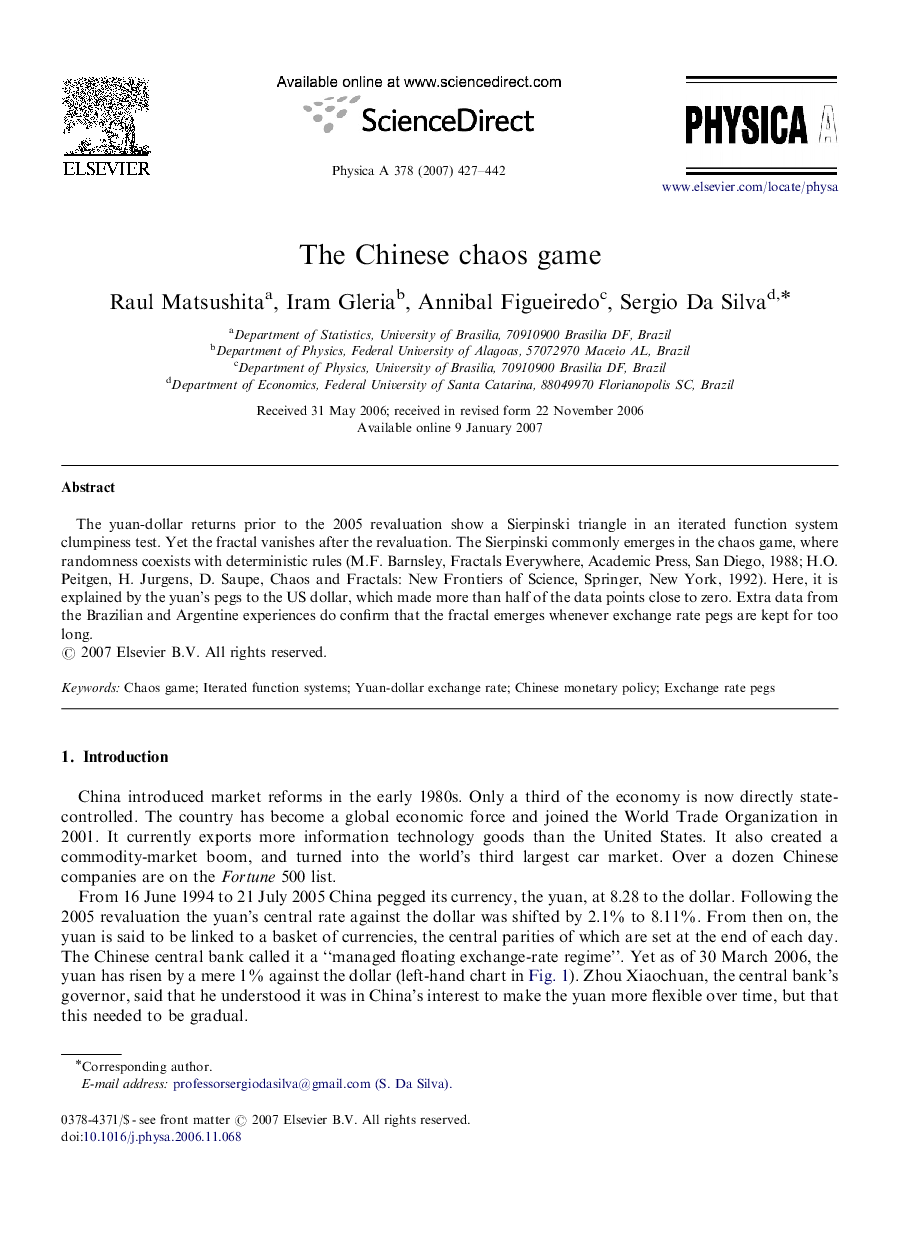| Article ID | Journal | Published Year | Pages | File Type |
|---|---|---|---|---|
| 976800 | Physica A: Statistical Mechanics and its Applications | 2007 | 16 Pages |
Abstract
The yuan-dollar returns prior to the 2005 revaluation show a Sierpinski triangle in an iterated function system clumpiness test. Yet the fractal vanishes after the revaluation. The Sierpinski commonly emerges in the chaos game, where randomness coexists with deterministic rules (M.F. Barnsley, Fractals Everywhere, Academic Press, San Diego, 1988; H.O. Peitgen, H. Jurgens, D. Saupe, Chaos and Fractals: New Frontiers of Science, Springer, New York, 1992). Here, it is explained by the yuan's pegs to the US dollar, which made more than half of the data points close to zero. Extra data from the Brazilian and Argentine experiences do confirm that the fractal emerges whenever exchange rate pegs are kept for too long.
Keywords
Related Topics
Physical Sciences and Engineering
Mathematics
Mathematical Physics
Authors
Raul Matsushita, Iram Gleria, Annibal Figueiredo, Sergio Da Silva,
